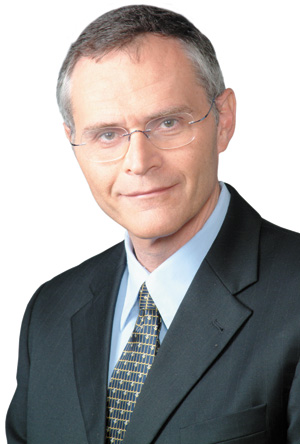Technion professor to lecture here on ‘Genetics of Being Jewish’
Published May 15, 2013
Dr. Karl Skorecki, the only child of Holocaust survivors, was born and educated in Toronto. He now conducts research in human molecular genetics and stem cell biology. Skorecki’s interest in population genetics began with a series of research studies tracing patrilineal genealogies in the Jewish priesthood and shared ancestries of Diaspora Jewish communities.
In June, the Biologic Therapeutics Center at the Washington University School of Medicine and the Jewish Federation of St. Louis’ Maimonides Society will bring Skorecki to St. Louis for two seminars. In addition to a scientific seminar, Skorecki will speak to lay audiences at 4:30 p.m. Monday, June 3 on “The Genetics of Being Jewish” (see infobox for more details).
ADVERTISEMENT
Skorecki made time recently to speak about his work.
What is “population genetics?”
Population genetics is a scientific discipline in which patterns of genetic diversity are examined at the level of geographically or ethnically defined groups of people.
How and when did you become interested in the field?
I studied population genetics as part of my undergraduate university studies but actually had begun reading about the early days of molecular genetics in high school. Throughout my undergraduate and postgraduate training in medicine and nephrology, I continued to follow the rapidly burgeoning developments in DNA analysis and molecular biology.
So then you began your research?
In the mid-1990s, my colleagues and I began a series of studies trying to use DNA markers as a tool to understand the demographic history of population groups, with an initial emphasis on Jewish population groups. This initial interest then rapidly expanded to many other population groups and their interrelations.
What does genetic analysis teach us?
That all humans are part of one family originating in Northeast Africa in antiquity, and that this family has many diverse branches. The Jewish people scattered throughout many diaspora communities, for the most part clustering on a branch originating in the Near East some 3000 years ago, with numerous subsequent bidirectional genetic and cultural influences throughout the diaspora dispersions and migrations.
ADVERTISEMENT
What will audience members learn from your talk in St. Louis on “The Genetics of Being Jewish?”
One can use DNA markers as an adjunctive tool alongside other means of learning about human history. Use of DNA markers complements linguistics, archival records, archeology and many other scholarly disciplines that aim to unravel recent and remote human history in an objective hypothesis-based, but agenda-free manner.
When did you decide to become a doctor and what led you to choose a career in medicine?
Although I thought about becoming a physician during my youth and high school years, my initial main interests were physics and mathematics. However, I felt that the application of scientific knowledge to interpersonal human interaction was an avenue that I preferred.
What is next for you? What avenues of research will you pursue in the future?
The beauty of scientific research is that opening a particular door leads to a new avenue that I could not have predicted – and therefore I refrain from predicting the avenues for research that might open up in the future. To quote Ralph Waldo Emerson: “Do not go where the path may lead, go instead where there is no path and leave a trail.”
















